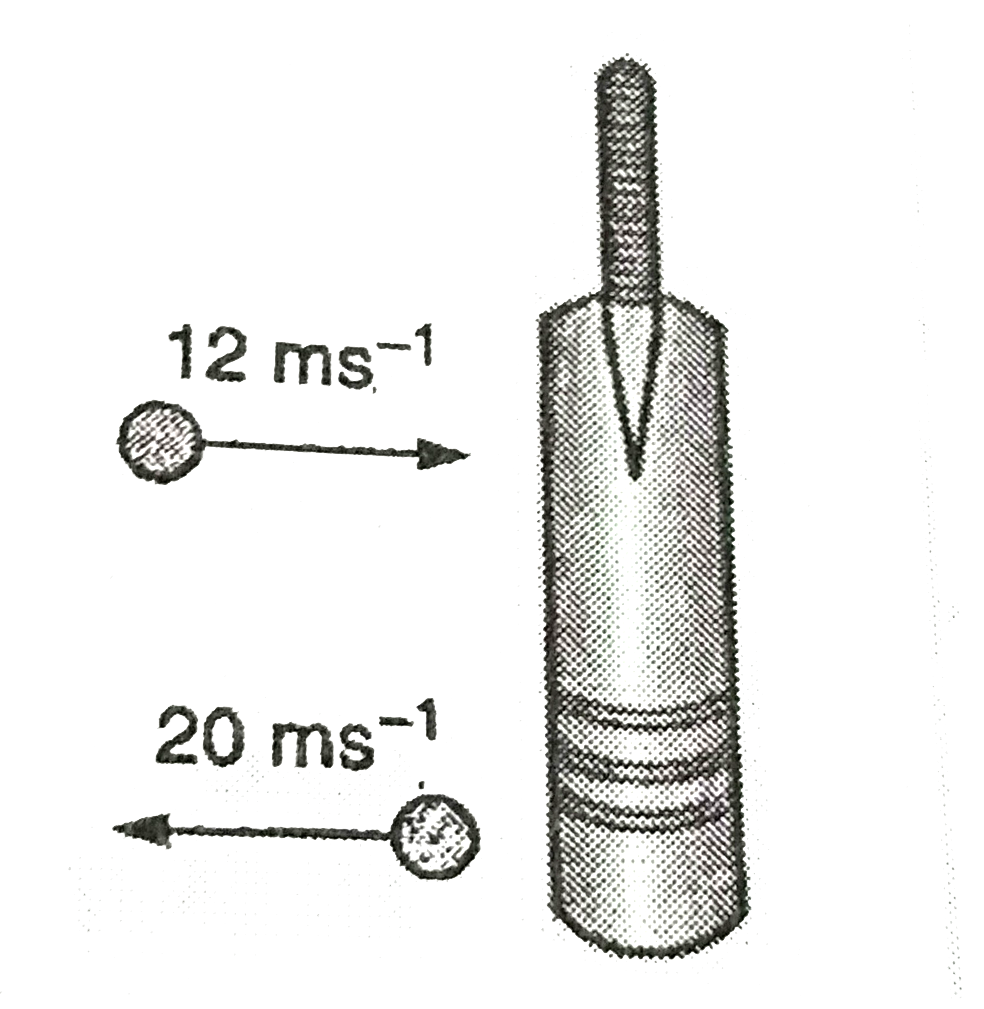A cricket ball of mass 100 g moving with a speed of is brought to rest by a player in 0.03 s. Find the change in momentum of ball.
To solve the problem of finding the change in momentum of a cricket ball, we will follow these steps:
Step 1: Convert the mass of the cricket ball from grams to kilograms.
The mass of the cricket ball is given as 100 g. To convert this to kilograms, we use the conversion factor where 1 kg = 1000 g.
m=100 g1000=0.1 kg
Step 2: Identify the initial and final velocities of the ball.
The initial velocity u of the ball is given as 30 m/s. Since the ball is brought to rest, the final velocity v is 0 m/s.
u=30 m/s
v=0 m/s
Step 3: Calculate the initial momentum of the ball.
The momentum p of an object is calculated using the formula:
p=m×v
For the initial momentum pi:
pi=m×u=0.1 kg×30 m/s=3 kg m/s
Step 4: Calculate the final momentum of the ball.
For the final momentum pf:
pf=m×v=0.1 kg×0 m/s=0 kg m/s
Step 5: Calculate the change in momentum.
The change in momentum Δp is given by the formula:
Δp=pf−pi
Substituting the values we found:
Δp=0 kg m/s−3 kg m/s=−3 kg m/s
Final Answer:
The change in momentum of the ball is −3 kg m/s.
---
The mass of the cricket ball is given as 100 g. To convert this to kilograms, we use the conversion factor where 1 kg = 1000 g.
The initial velocity u of the ball is given as 30 m/s. Since the ball is brought to rest, the final velocity v is 0 m/s.
v=0 m/s
The momentum p of an object is calculated using the formula:
For the final momentum pf:
The change in momentum Δp is given by the formula:
The change in momentum of the ball is −3 kg m/s.
Topper's Solved these Questions
- LAWS OF MOTIONBOOK - ICSECHAPTER - LAWS OF MOTIONEXERCISE - TOPIC 3 (2 Marks Questions )
9 Videos
- LAWS OF MOTIONBOOK - ICSECHAPTER - LAWS OF MOTIONEXERCISE - TOPIC 3 (3 Marks Questions )
7 Videos
- LAWS OF MOTIONBOOK - ICSECHAPTER - LAWS OF MOTIONEXERCISE - TOPIC 2 (3 Marks Questions )
11 Videos
- ICSE ANNUAL EXAMINATION -2020BOOK - ICSECHAPTER - ICSE ANNUAL EXAMINATION -2020EXERCISE - SECTION-II
45 Videos
- LIGHTBOOK - ICSECHAPTER - LIGHTEXERCISE - TOPIC 2 Spherical Mirrors (4 Marks Questions )
9 Videos
Similar Questions
A cricket ball of mass 100 g moving with a speed of 30ms−1 is brought to rest by a player in 0.03 s. Find the average force applied by the player.
View SolutionA cricket ball of mass 150 g moving at a speed of 25 ms−1 is brought to rest by a player in 0.03 s. Find the average force applied by the player.
View SolutionA cricket ball of mass 200 gm moving with velocity 15 m/s is brought to rest by a player in 0.05 sec. What is the impulse of the ball and average force exerted by player ?
View SolutionA cricket ball of mass 150 g is moving with a speed of 12ms−1 and is hit by a bat so that the ball is turned back with velocity of 20ms−1 if duration of contact between bat and ball is 0.01 s then:

View SolutionA player caught a criket ball of mass 150 g moving at the rate of 20ms−1 . If the catching process the completed in 0.1s , the force of the blow exerted by the ball on the hands of the player is
View SolutionA ball of mass 0⋅2 kg moving with a speed of 30 m/s strikes a bat returns in opposite direction with speed of 90m/s . Magnitude of change in momentu,m of ball will be
View SolutionCalculate the de Broglie wavelength of a ball of mass 0.1kg moving with a speed of 30ms−1
View SolutionA player caught a cricket ball of mass 150g moving at a rate of 20m/s. If the catching process is completed in 0.1s, the force of the blow exerted by the ball on the hand of the player is equal to
View SolutionA cricket ball of mass 150 kg is moving with a velocity of 12m/s and is hit by a bat so that ball is turned back with a velocity of 20m/s . The force of the blow acts for 0.01 s on the ball . Find the average force exerted by the bat on the ball.
View SolutionA ball of mass 10 g is moving with a velocity of 50ms−1. On applying a constant force on ball for 2.0 s, it acquires a velocity of 70ms−1. Calculate the rate of change of momentum
View Solution
